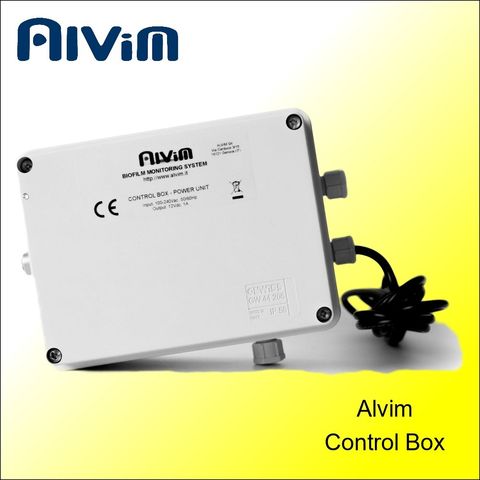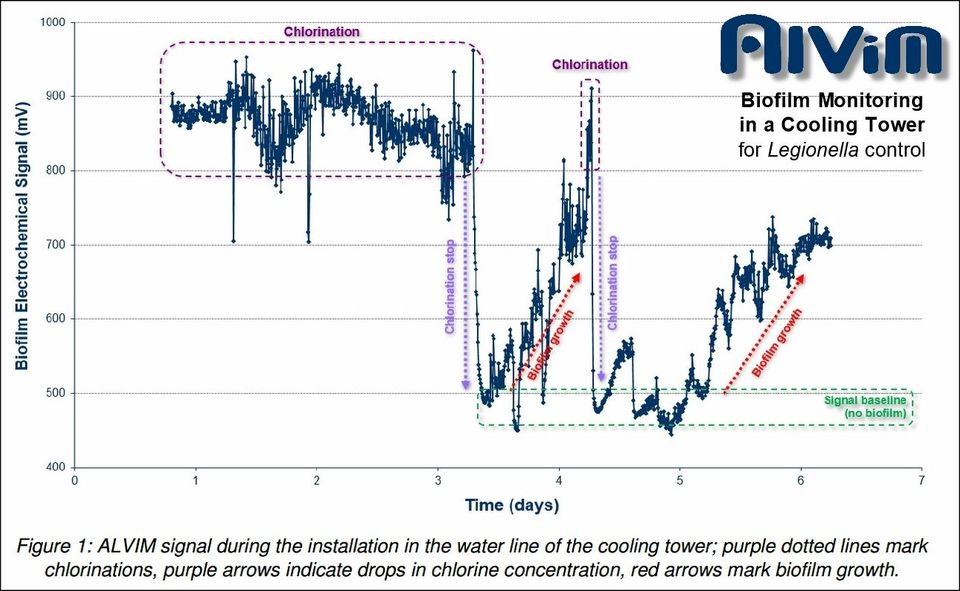Products
Protect Public Health ~ Consumer & Food Safety ~ Product Quality ~ Process Hygiene
Maintain Operational Efficiency ~ Plant Performance & Reliability
Comply with Regulations and Food Safety Legislation
Industrial Biofilm Sensor [A001S3]
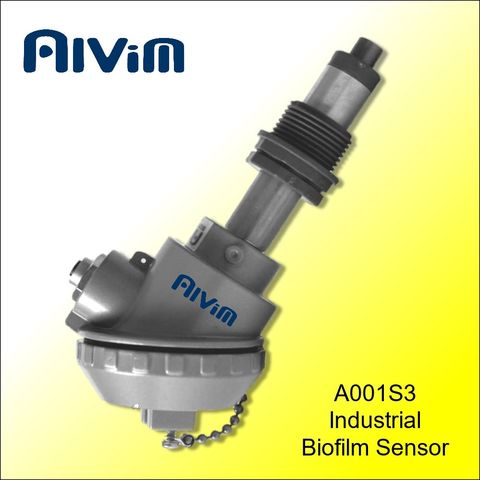
The ideal biofilm sensor for numerous industrial applications
where bacterial infection must be monitored and controlled. Typically where system blockages lead to reduced process performance, equipment failure and corrosion and especially where infections such as Legionella bacteria can develop. Biofilm sensors can help to reduce the risk of Legionnaire's disease while also reducing operating costs and unnecessary energy consumption.
Applications:
Legionella Control in Evaporative Cooling & HVAC systems
Protection of cooling heat exchangers e.g. Power Stations
Monitoring automated cleaning performance e.g. Paper & Pulp
Membrane filtration and RO systems to reduce blockages
Water distribution systems especially
ALVIM Model: A001S3
Process Connection: Male Thread, 1" BSPP. Max.: 10 bar g.
Wetted Materials - Electrodes: Titanium & Zinc, Connector: PVC
Offers resistance to: Seawater and chlorine based biocides
Biofilm Sensitivity: 1% to 100% surface coverage of the probe by the first layer of bacterial cells.
Operating Conditions for biofilm sensing (A001S3):
Temperature: +2°C to +40°C (Min. -10°C to Max. +60°C)
Dissolved Oxygen: More than 1 ppm at max. sensitivity
Conductivity: More than 10 µS/cm
Wiring: 6-wire - Power supply: 12V DC; Output signal: Analogue 4-20mA; Communications: RS485/MODBUS RTU
Hygienic Biofilm Sensor [AS01S3]
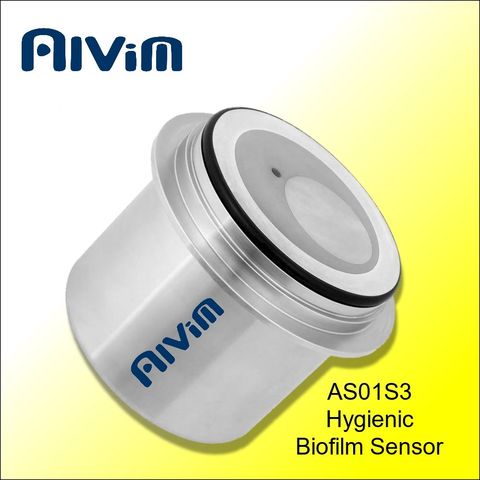
The ideal biofilm sensor for
hygienic process systems
to
continuously monitor for bacterial infection in the hygiene critical Food, Dairy, Beverage, Personal Care & Pharmaceutical sectors.
Compliments traditional lab testing techniques and enhances HACCP systems. Signal integration into PLC / SCADA systems facilitates automated bacterial infection monitoring and control.
Applications:
Monitor process water treatment, ingredient feeds and product routes for infection and for the effectiveness CIP cleaning.
Monitor water distribution systems
ALVIM Model: AS01S3
Process Connection: Hygienic VARIVENT® Type N (DN40-DN150, 1.5"-6" OD). Max.: 10 bar g.
Wetted Materials - Electrodes: Titanium & Stainless Steel, VARIVENT®: Stainless Steel. PEEK and EPDM
Resistant to: Most products and CIP chemicals
Biofilm Sensitivity: First layer of bacterial cells.
Operating Conditions for biofilm sensing (AS01S3):
Temperature: +2°C to +40°C (Min. -10°C to Max. +150°C)
Dissolved Oxygen: More than 1 ppm at max. sensitivity
Conductivity: More than 30 µS/cm
Wiring: 6-wire - Power supply: 12V DC; Output signal: Analogue 4-20mA; Communications: RS485/MODBUS RTU
®VARIVENT is a registered trademark of GEA Tuchenhagen GmbH
ATEX Biofilm Sensor [AX03S3]
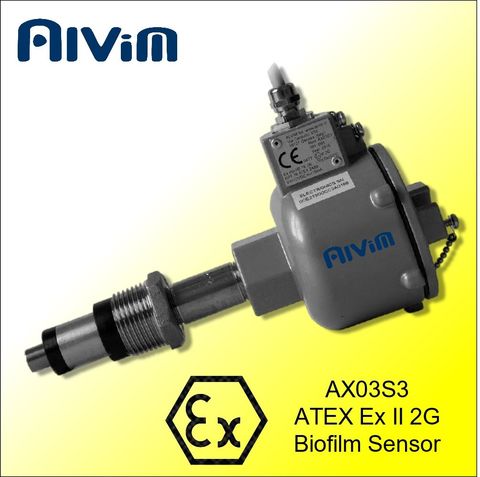
The AX03S3 is a
biofilm sensor for ATEX
industrial applications,
with certification for use in explosion risk areas. Performance and applications similar to the
standard A001S3
sensor above
Applications:
Typically in the oil, gas and petrochemicals
ALVIM Model: AX03S3
Process Connection: Male Thread, 1" BSPP. Max.: 10 bar g.
Wetted Materials - Electrodes: Titanium & Zinc, Connector: POM-C and Stainless Steel. ATEX rating: Ex II 2G. Ex mb IIB T6 Gb
Biofilm Sensitivity:
1% to 100% surface coverage of the probe by the first layer of bacterial cells.
Operating Conditions for biofilm sensing (A001S3):
Temperature: +2°C to +40°C (Min. -10°C to Max. +60°C)
Dissolved Oxygen: More than 1 ppm at max. sensitivity
Conductivity: More than 10 µS/cm
Wiring: 6-wire - Power supply: 12V DC (500mA); Output signal: Analogue 4-20mA; Communications: RS485/MODBUS RTU
ALVIM Control Box for connection up to six biofilm sensors
(A001S3, AS01S3, AX03S3 & A003S3). Connects DC power, data and signal communication with the sensor.
Dimensions: 150 x 110 x 70 mm
IP Rating: IP 54 to IP 56 (varies according to version)
Temperature range: -10°C (non-condensing)
to +60°C
Power input: 100 to 240V AC 1Ph. 50/60 Hz
6 wire I/O connection with sensor:
- Output to power sensor: 12V DC, 1 A
- Input signal from sensor
4-20 mA current loop
- Communication with sensor RS485/MODBUS
With RS485/MODBUS the sensitivity of each probe can be adjusted for different operating conditions and conductivity levels
Biofilm output signal: 4-20 mA current loop
Communication I/O *: available on request.
CB-USB: With USB data card (standard)
CB-TCP: With MODBUS TCP gateway *
CB-WIFI: With MODBUS TCP over WiFi gateway *
Install outside ATEX zones
Installation of probes:
It is important to install biofilm sensing probes in positions which will provide the best information. Just like sampling points, the more probes that are installed, the better the information that is obtained about conditions in the system. Consideration should be given to the following:
If installing two or more probes choose positions which will provide the worst and best conditions for biofilm growth. The signals from the probes can then be compared to identify points of high infection in the system. The positions are typically chosen as follows:
- Highest and Lowest Turbulence. Surface attachment by biofilm is least likely if turbulence is high.
- Lowest and Highest Temperature. Biofilm grows slowly at low temperatures. Whereas warm conditions around 25 - 35°C normally encourage biofilm growth. Avoid high temperatures.
- One probe just after the injection point for cleaning chemicals. Another probe at the end of the system.
If only one probe is installed, choose a position where biofilm is most likely to grow. This is generally where low turbulence and warm temperatures are found. The sensor will then provide an early warning.
Biofilm probes are suitable for installation in storage tanks and process vessels. For
research applications, biofilm sensing probes can be mounted into laboratory equipment and bioreactors.
Biofilm in a Cooling Tower
More application cases...
The manager of this cooling tower thought their systems automatically dosed chlorine continuously (24/7) into the water. He installed an ALVIM probe to check the effectiveness of the treatment. He was shocked to discover that their chlorination treatment was not working correctly. In reality chlorine injection was inconsistent and intermittently so ineffective that biofilm started to grow. In effect biofilm growth was only being periodically delayed, not stopped. ORP (Oxidation-Reduction Potential) tests by technicians confirmed that Cl dosing was indeed ineffective. ORP sensors only monitor changes in the concentration of oxidizing substances. Whereas ALVIM probes detect both Biofilm growth and changes in Conductivity. In effect as well as detecting Bacteria Biofilm Sensors can also provide continuous indicative REDOX monitoring of chlorine or bromine concentrations
in the case of cooling towers.
Click the image to read the full report...

